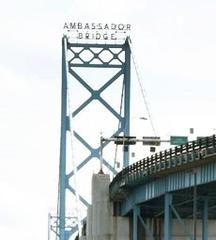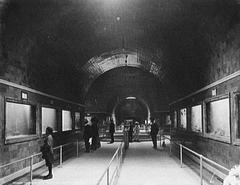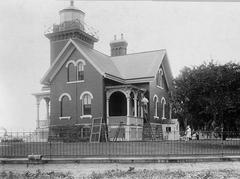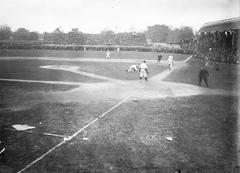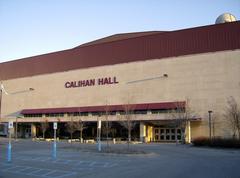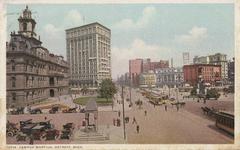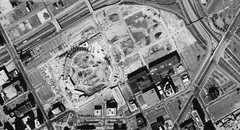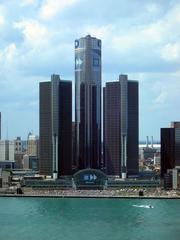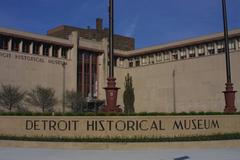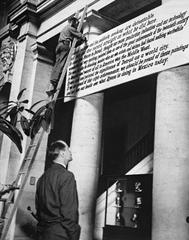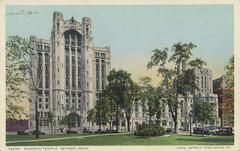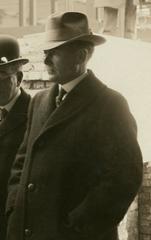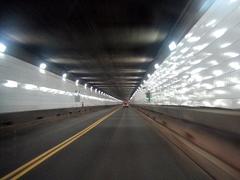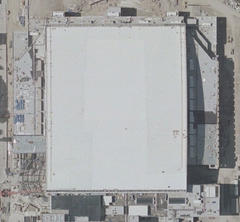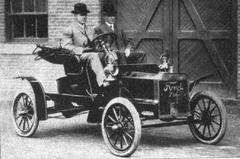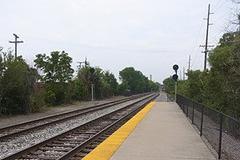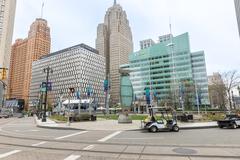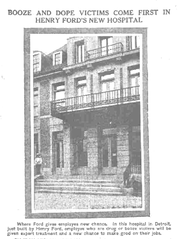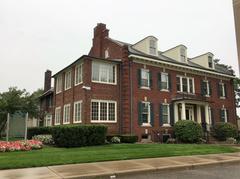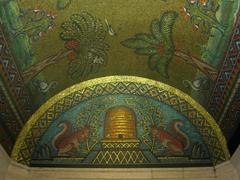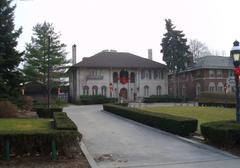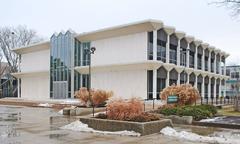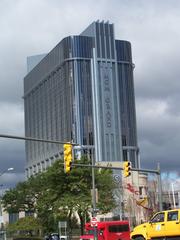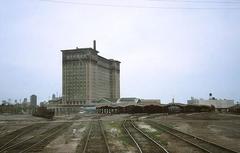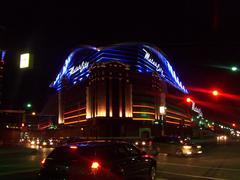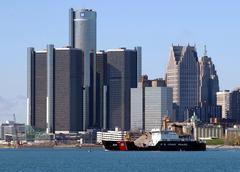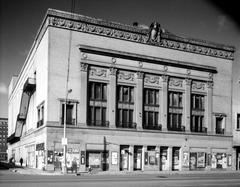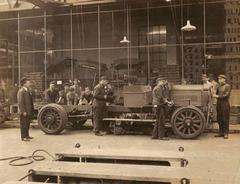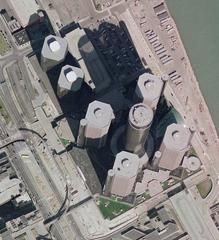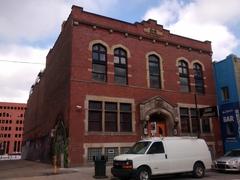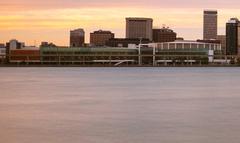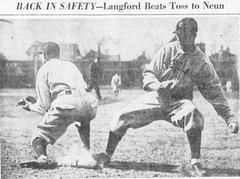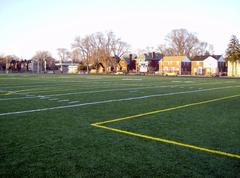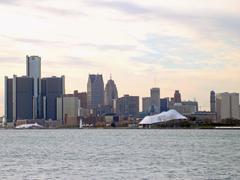El Tovar Apartments Detroit: Visiting Hours, Tickets, and Historical Site Guide
Date: 04/07/2025
Introduction
Nestled in Detroit’s historic East Grand Boulevard District, the El Tovar Apartments stand as a striking example of the city’s rich architectural legacy and evolving urban landscape. Built in 1928 during Detroit’s industrial boom, the building is renowned for its distinctive Eclectic Revival architecture—melding Spanish, Mediterranean, and Moorish influences through vibrant orange brickwork, terra cotta accents, red clay tile roofs, and ornate wrought iron balconies. While the building is privately owned and does not offer public interior access, visitors and architecture enthusiasts are encouraged to admire its exterior and explore the surrounding Islandview neighborhood, a testament to both Detroit’s early 20th-century ambitions and its ongoing revitalization. This comprehensive guide covers the El Tovar Apartments’ history, architectural highlights, visitor tips, accessibility, nearby attractions, and practical information for planning a respectful and engaging visit.
For more in-depth information, see Visit Detroit, Historic Detroit, and Detroit1701.org.
Table of Contents
- Introduction
- Historical and Architectural Background
- Urban Development and Neighborhood Evolution
- Visiting El Tovar Apartments: Hours, Tickets, and Tours
- Architectural Style and Design Features
- Socioeconomic Impact and Community Role
- Infrastructure and Accessibility
- Modernization and Preservation Efforts
- Nearby Attractions and Travel Tips
- Frequently Asked Questions (FAQ)
- Conclusion
- Additional Resources
Historical and Architectural Background
El Tovar Apartments rose during Detroit’s rapid industrial expansion of the 1920s, a time when the city’s population swelled due to the booming automotive industry. Conceived to provide stylish, modern housing for a burgeoning middle class, El Tovar reflects the eclectic tastes of the era—combining romantic European motifs with contemporary amenities. The building’s architectural features, including decorative brickwork, terra cotta panels, arched windows, red clay barrel tiles, and wrought iron balconies, evoke a sense of elegance and durability that remains captivating nearly a century later (Historic Detroit).
Urban Development and Neighborhood Evolution
Situated in Islandview and along Grand Boulevard, El Tovar Apartments occupies a neighborhood originally planned to house Detroit’s workforce. The area’s grid layout, tree-lined streets, and proximity to public transit fostered a sense of community and accessibility. Although Detroit faced significant mid-century economic and demographic challenges, Islandview’s historic character—including El Tovar—has endured. Recent revitalization efforts have focused on infrastructure improvements and preservation, positioning the building as a touchstone in Detroit’s urban renaissance (Experience Detroit).
Visiting El Tovar Apartments: Hours, Tickets, and Tours
Public Access:
El Tovar Apartments is an active residential building with no public interior tours or ticket requirements. Visitors are welcome to appreciate its exterior architecture from the public sidewalks and streets at any time. Please respect resident privacy and avoid entering the property or photographing through windows.
Best Times to Visit:
The building’s exterior is most photogenic during early morning or late afternoon, when natural light accentuates the warm hues of its brick and terra cotta details. Spring, summer, and autumn are ideal for neighborhood walks.
Guided Tours:
While El Tovar itself does not offer formal tours, it is often featured in broader architectural walking tours of Detroit’s historic neighborhoods. Consult local tour operators or the Visit Detroit website for current offerings.
Architectural Style and Design Features
Eclectic Revivalism:
El Tovar’s design blends Spanish, Mediterranean, and Moorish architectural elements. Key features include:
- Orange brick and limestone trim
- Red clay tile roofs and minaret-like towers
- Terra cotta panels and decorative stonework
- Wrought iron balconies and lanterns
- A prominent arched entrance adorned with “El Tovar” and carved lion figures
Interior Layout:
While not open to the public, historic layouts featured spacious one- and two-bedroom apartments with hardwood floors, plaster moldings, and high ceilings, mirroring the Mediterranean-inspired exterior (Wikipedia).
Socioeconomic Impact and Community Role
El Tovar Apartments have long contributed to Islandview’s diverse residential fabric. Once home to middle-class professionals, the building now supports a mix of residents, reflecting Detroit’s changing economic landscape. Community engagement programs and affordability initiatives, such as Hometown Heroes and Student Rewards, underscore its ongoing role in neighborhood stability and revitalization (Chamber of Commerce).
Infrastructure and Accessibility
Located in a walkable and bike-friendly area, El Tovar Apartments are accessible by public transportation (DDOT bus routes along East Grand Boulevard and Jefferson Avenue). Street parking is available, but visitors should observe posted regulations. Sidewalks are well-maintained and accessible for those with mobility challenges.
Modernization and Preservation Efforts
Preservation initiatives have focused on maintaining El Tovar’s original architectural features while updating amenities for modern living. Although in-unit laundry is not available, the property offers other conveniences and a pet-friendly policy. Maintenance and management challenges exist, but ongoing community advocacy supports improvements and tenant well-being (Detroit Living).
Nearby Attractions and Travel Tips
Within Walking Distance:
- Heidelberg Project: Outdoor art installation (Trek Zone)
- St. Charles Borromeo Roman Catholic Church: Historic church
- St. Bonaventure Monastery: Religious landmark
- Indian Village: Historic mansion district
- Elmwood Cemetery: Michigan’s oldest non-denominational cemetery
- Belle Isle Park: Accessed via MacArthur Bridge
- Pewabic Pottery: Renowned ceramics studio
Travel Tips:
- Use public transit or bikes to explore the area.
- Nearby neighborhoods offer dining, shopping, and public amenities.
- Respect residents’ privacy, especially when photographing or touring the neighborhood.
Frequently Asked Questions (FAQ)
Q: Can I tour the inside of El Tovar Apartments?
A: No, the building is a private residence with no public interior access.
Q: Are there visiting hours or tickets required?
A: No. The exterior can be viewed at any time from public spaces, and no tickets are required.
Q: Are guided tours available?
A: El Tovar is occasionally included in local heritage walking tours. See Visit Detroit for information.
Q: Is parking available?
A: Street parking is available but may be limited. Observe local regulations.
Q: Is the building wheelchair accessible?
A: Sidewalks are accessible, but interior accessibility varies and is for residents only.
Conclusion
El Tovar Apartments symbolize Detroit’s architectural richness and urban resilience. Although access is limited to the exterior, the building remains a must-see for those interested in the city’s historical and cultural evolution. Visitors are encouraged to explore the surrounding neighborhoods, utilize local resources for tours, and respect the privacy of residents. El Tovar stands not just as an architectural landmark, but as part of Detroit’s ongoing story of preservation and renewal.
For interactive maps, curated tours, and updated event listings, download the Audiala app or visit our resources below.
Additional Resources
- Detroit Historical Society
- Detroit Preservation League
- Detroit Department of Transportation
- Visit Detroit
- Historic Detroit
- Detroit1701.org
- Wikipedia
- Detroit Living
- Experience Detroit
- Chamber of Commerce – El Tovar Apartments
- Trek Zone
For additional guides, downloadable resources, and the latest news on Detroit’s historical sites and community events, follow us on social media and download the Audiala app.
